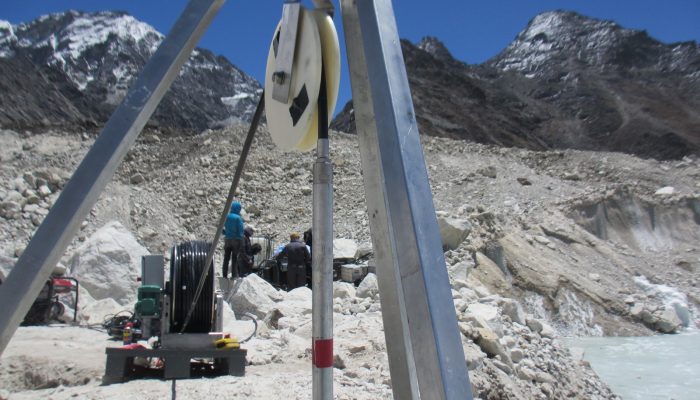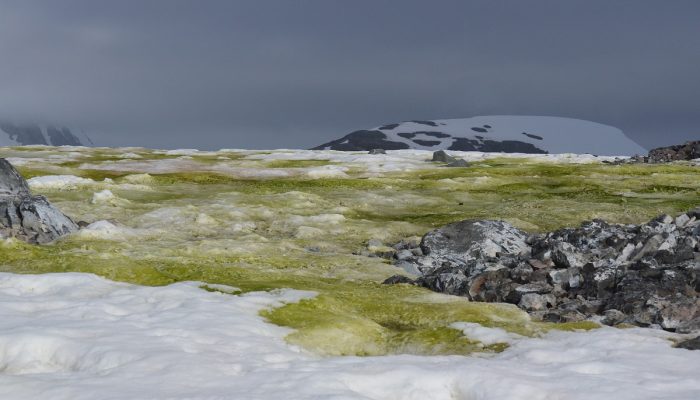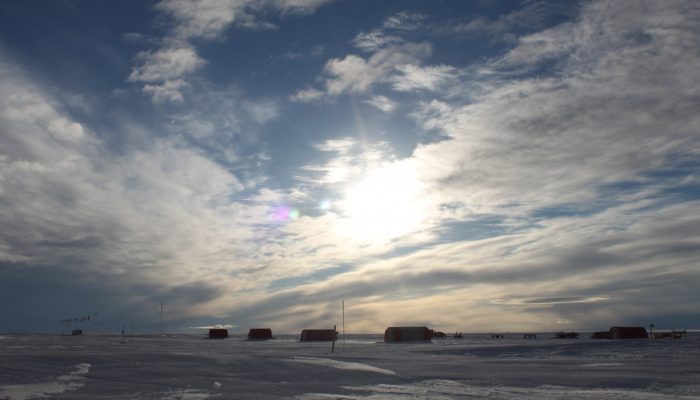Up to now, ice sheet mass changes due to ice dynamics have been computed from satellite observations that suffer from sparse coverage in time and space. A new method allows us to compute these changes on much wider temporal and spatial scales. But how does this method work? Let us discover the different steps by having a look at Enderby Land in East Antarctica, for which ice velocities are shown i ...[Read More]
Geodynamics
A Geodynamicist and an Early Career Scientist
This week Adina Pusok, postdoctoral fellow at the Institute of Geophysics and Planetary Physics (IGPP) at Scripps Institution of Oceanography, University of California San Diego, USA, discusses what it is like to be an Early Career Scientist within the EGU Geodynamics division. The terms “Early Career Scientist” (ECS) or “Young Scientist” (YS) are now so widely used in the scientific community, th ...[Read More]
Climate: Past, Present & Future
Of butterflies and climate: how mathematics helps us to better understand the atmosphere
Applied mathematics is often seen as an obscure field, which the general public has no hope of ever understanding. In the context of climate science, this is far from the truth. In fact, many mathematical concepts and ideas applied to the study of the climate system stem from intuitive arguments. While their implementation can be very complex, understanding the basic ideas behind them does not req ...[Read More]
Cryospheric Sciences
Image of the Week – Drilling into a Himalayan glacier
How water travels through and beneath the interior of debris-covered glaciers is poorly understood, partly because it can be difficult to access these glaciers at all, never mind explore their interiors. In this Image of the Week, find out how these aspects can be investigated by drilling holes all the way through the ice… Hydrological features of debris-covered glaciers Debris-covered glaciers ca ...[Read More]
Earth and Space Science Informatics
PICO in the picture
Like everyone else, in the beginning I was skeptical of the newly introduced presentation format at the EGU – the PICO sessions. PICO stands for Presenting Interactive Content. Half talk, half poster – this is a new design that demands a completely new and unfamiliar preparation of the presenter, and yes admittedly at first this meant additional work. However, already during the creation of my fir ...[Read More]
Geodynamics
Karaoke, geodynamics, and a bit of history
Let me just talk to you about what I have been doing with my free time recently: I discovered a feature from Google Books named Ngram viewer which allows you to make graphs that show how words or phrases have occurred in a selection of books (e.g., English) over the selected years. I have of course been playing with this thing! You can imagine how exciting my weekends are. In all seriousness, thou ...[Read More]
Solar-Terrestrial Sciences
Capturing a Whole Total Eclipse of the Sun: Megamovie
by Hugh S Hudson (U. of Glasgow and UC Berkeley) Normally solar eclipses give an observer only a fleeting moment (minutes at most) to enjoy the solar corona. We aim to amplify that considerably in the August 21 eclipse across North America. The plan is simple: Megamovie will capture everybody’s images, especially those from a group of 1,000 photographc volunteers, and compile them into an op ...[Read More]
Cryospheric Sciences
Image of the Week – Fifty shades of snow
When I think of snow, I tend to either think about the bright white ski slopes in the mountains or the large white areas in the Arctic. However, natural phenomena can lead to colorful snow. Our Image of the Week shows snow can be green! Snow can also turn orange, pinkish, grey and even yellow… But where do these different shades of snow come from? White The most common color of snow is white (see ...[Read More]
Geodynamics
Don’t be a hero – unless you have to
The Geodynamics 101 series serves to show the diversity of topics and methods in the geodynamics community in an understandable manner for every geodynamicist. PhD’s, postdocs, full professors, and everyone in between can introduce their field of expertise in a lighthearted, entertaining manner and touch on some of the outstanding questions and problems related to their method of choice. Thi ...[Read More]
Cryospheric Sciences
Image of the Week – Summer is fieldwork season at EastGRIP!
As the days get very long, summer is a popular season for conducting fieldwork at high latitudes. At the North East Greenland Ice Stream (NEGIS), the East Greenland Ice-core Project (EastGRIP) is ongoing. Several scientists are busy drilling an ice core through the ice sheet to the very bottom, in continuation to previous years (see here and here). This year, amongst others, several members from t ...[Read More]







